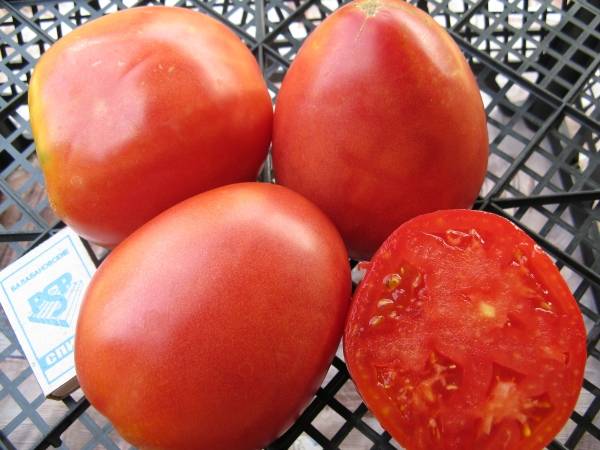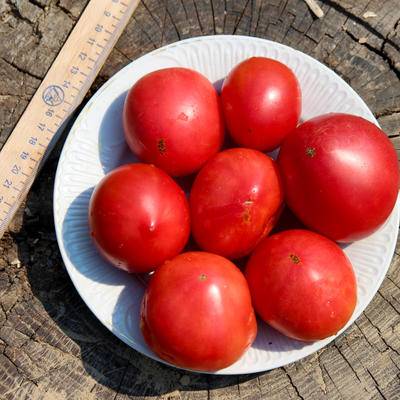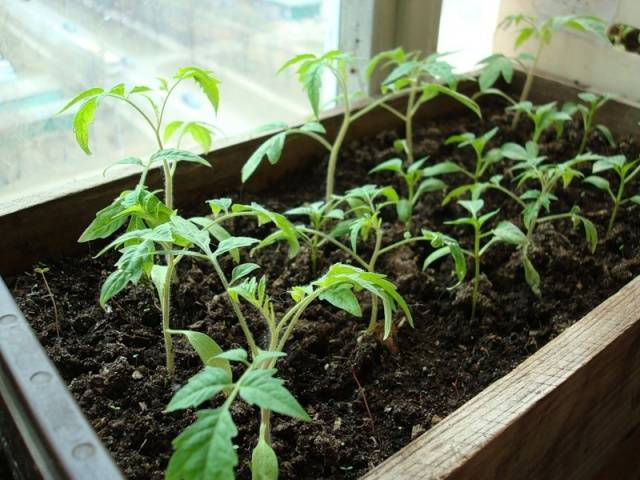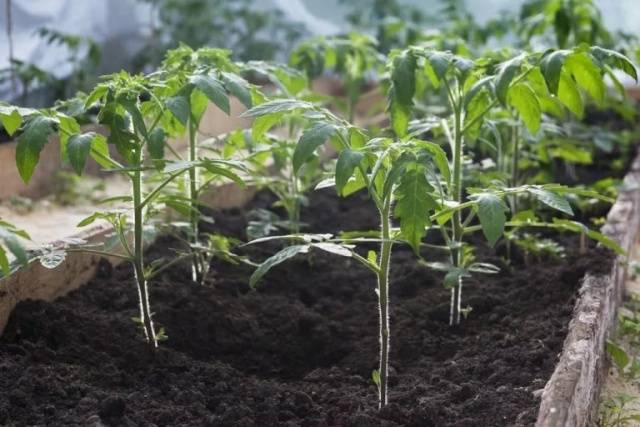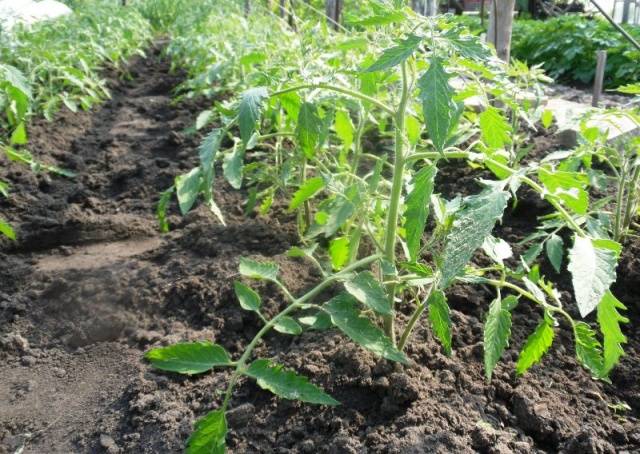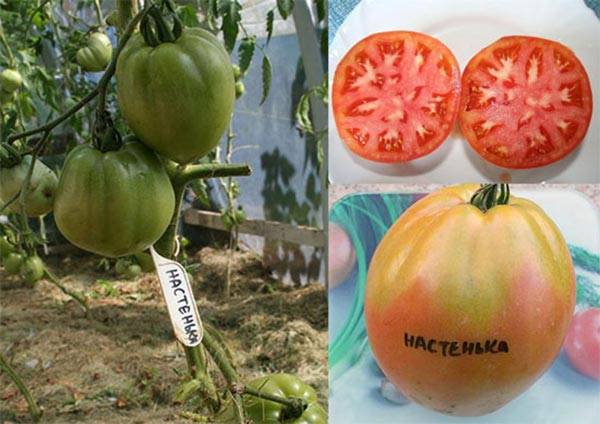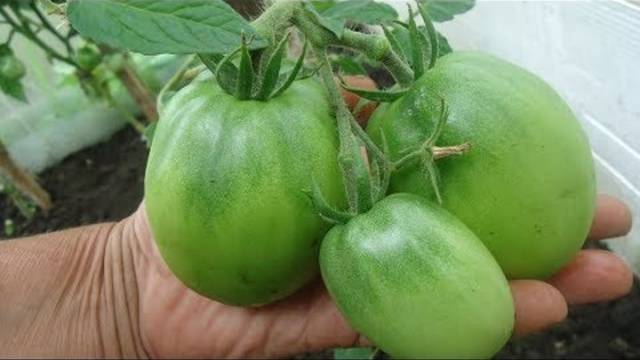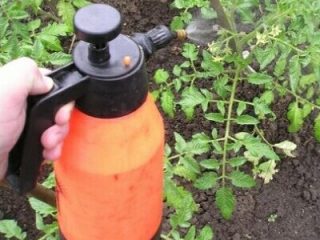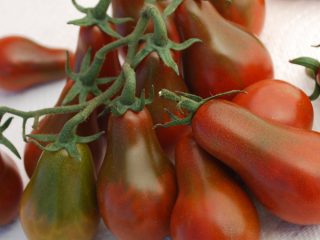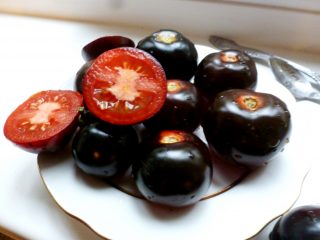Content
Tomato Nastenka is the result of the activities of Russian breeders. The variety was entered in the state register in 2012. It is grown throughout Russia. In the southern regions, planting is carried out in open ground, and in colder conditions, the variety grows in greenhouses.
Features of the variety
Description and characteristics of the tomato variety Nastenka are as follows:
- mid-season variety;
- determinant type bush;
- height up to 60 cm;
- standard bush;
- small green leaves;
- 6-8 fruits ripen on one bunch.
The fruits of the Nastenka variety have a number of features:
- rounded heart-shaped;
- when mature, they are red;
- weight 150-200 g;
- number of chambers from 4 to 6;
- dry matter content of the order of 4-6%;
- pleasant sweet taste.
Variety yield
Tomatoes Nastenka belong to standard plants that are able to grow and produce crops throughout the season. The variety is considered high-yielding: up to 1.5 kg of tomatoes are harvested from one plant.
According to its characteristics and description, the tomato variety Nastenka has a universal application. They are suitable for preparing salads and other dishes, as well as for pickling, pickling and other types of canning. Tomatoes are subject to long-term storage and transportation.
Growing order
First, Nastenka's tomato is planted at home to get seedlings. Young tomatoes are provided with the necessary conditions: access to sunlight and temperature. After 2 months, the seedlings are transferred to a permanent place. Depending on the climatic conditions, a greenhouse or an open area is chosen.
Getting seedlings
Tomato seeds Nastenka are planted in March in prepared soil. Its composition includes two main components: garden soil and humus. Before planting, you need to process the soil by placing it in an oven or microwave. To disinfect the soil, 15 minutes of such treatment is enough.
Seed material is also recommended to be prepared for planting. It is wrapped in a damp cloth and kept warm throughout the day. If purchased seeds are used, then you need to pay attention to their color. Bright colors indicate the presence of a nutritive shell.
Prepared soil is placed at the bottom of the containers. Then the seeds are placed in rows, 2 cm are left between them. 1 cm of peat or fertile soil is poured on top and irrigated. The containers must be covered with foil and kept in a dark place at a temperature of 25 degrees.
When shoots appear, they are moved to a well-lit place. During the first week, the temperature is maintained at 16 degrees, after which it must be increased to 20 degrees.
When 1-2 sheets appear, the tomatoes are seated in separate containers. For normal growth, tomatoes need backlighting for half a day. Water the tomatoes when the soil dries up a little.
Greenhouse landing
Nastenka's tomatoes are transferred to the greenhouse when they are 60 days old. At this stage, 6-7 leaves are formed in tomatoes. A greenhouse made of polycarbonate, film or glass is suitable for growing tomatoes.
The soil for planting must be prepared in the fall. The top layer is removed, since pests and fungal spores live in it. The remaining soil is dug up and fertilized with compost.
Variety Nastenka is planted every 0.4 m. It is most convenient to arrange the plants in a checkerboard pattern. This avoids thickening and simplifies tomato care. If you plan to get several rows, then leave 0.5 m between them.
Tomatoes are planted in holes 20 cm deep. The root system is transferred along with an earthen clod. The final stage is abundant watering of the tomatoes.
Landing in open ground
Tomatoes are planted in open areas when the spring frosts pass. The air and soil should warm up well. The first week after planting the plants, it is recommended to cover them at night with agrofilm.
Before planting in the ground, Nastenka's tomatoes are hardened so that the plants can quickly adapt to new conditions. To do this, they are transferred to a balcony or loggia. First, the tomatoes are kept in the fresh air for 2 hours, gradually this period is increased.
The preparation of the beds for tomatoes is done in the fall. For them, they choose areas where cabbage, beets, legumes previously grew. There is no planting after tomatoes, peppers, eggplants and potatoes.
Tomato Nastenka is planted according to the scheme 40x50 cm. The bushes are placed in holes 20 cm deep, the roots are covered with earth and watering is carried out.
Variety care
Nastenka's tomatoes are looked after according to a certain scheme, which includes watering, feeding and tying up. The variety responds well to the application of phosphorus and potash fertilizers.
Watering tomatoes
Variety Nastenka needs moderate watering. With a lack of moisture curled tomato leaves and the inflorescences crumble. Excess moisture also negatively affects plants: fungal diseases are activated and the root system rots.
Tomatoes are poured with warm water, which has settled in barrels. Moisture should not get on the roots and leaves of plants. The procedure is carried out in the morning or in the evening so that the water does not evaporate, but goes into the ground.
Regular watering is carried out a week after the tomatoes are planted. Until the inflorescences appear, tomatoes are watered every 3 days, consuming 2 liters of water. When inflorescences form, tomatoes are watered every week and the volume of water is increased to 5 liters.
During the fruiting period, tomatoes need to be watered every 4 days, the water consumption should be 3 liters. When the fruits begin to turn red, watering is reduced and moisture is applied once a week. According to reviews on tomato Nastenka, excess moisture during this period causes the fruit to crack.
After watering, the soil under the bushes is loosened, and the trunks are spud. This procedure ensures air exchange in the soil and improves moisture absorption.
Fertilization
Top dressing of tomatoes is carried out with the help of mineral fertilizers and folk remedies. Treatment begins a week after the transfer of plants to a permanent place.
First, the tomatoes are fed with phosphorus, which promotes the growth of the root system. To do this, 15 g of superphosphate are needed for a 5-liter bucket of water. The resulting planting solution is watered at the root.
After 10 days, a potassium fertilizer is prepared, which has the property of improving the taste of fruits and increasing the immunity of tomatoes. For 5 liters of water, 15 g of potassium sulfate are measured. The solution is used for watering tomatoes.
Wood ash will help replace mineral fertilizers. It is buried in the ground under tomato bushes or an infusion is prepared for irrigation. For the infusion, you will need 3 liters of ash, which is poured into 5 liters of water. After a day, the resulting product is diluted with the same amount of water and used for irrigation.
Stepson and tying
According to the photo and description, the tomato variety Nastenka is undersized, so it does not need pinching. The plant forms 3-4 stems.
It is recommended to tie the stem of the plant to a wooden or metal support, especially when grown in areas subject to wind and precipitation. Tying the tomatoes prevents the tomatoes from sinking to the ground and makes them easier to care for.
Gardeners reviews
Conclusion
Variety Nastenka has good taste and is suitable for home canning. Tomatoes need constant care, which consists of watering and fertilizing. The variety is considered unpretentious and gives an average yield.
